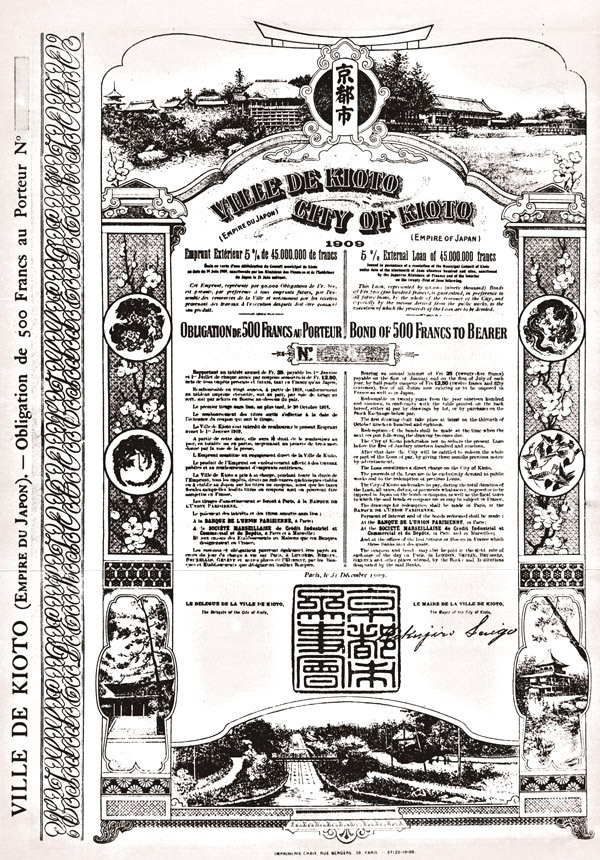Episode
Construction cost: special taxes for specific purposes and issuance of foreign bonds
The construction of the First Canal cost 1.2 million yen (the value at that time). The cost was twice the annual budget of Kyoto Prefecture.
The funds included: the industrial fund granted by the government for industry promotion, subvention from the national and prefectural governments, municipal bonds, and special taxes for specific purposes imposed on the citizens of Kyoto City. Although there were objections against such a heavy share of tax, most citizens were convinced and accepted it, for the reconstruction of Kyoto. We can see how the citizens had high expectations from the canal construction.
Through unified effort of government and people, the big project to construct the Lake Biwa Canal completed in 1890.
Entering the 1900s, the first mayor of Kyoto City Naiki Jinzaburo planned the construction of a new canal. He could not realize this plan though, because of problems such as construction costs. The second mayor Kikujiro Saigo took over the plan, and started the construction of the Second Canal, as one of the “Three major projects of Kyoto City.”
The total amount of initial budget for “Three major projects of Kyoto City” was 17.16 million yen, which was approximately 34 times the tax revenue of the city. It was difficult to ask the citizens to bear the tax burden, as they had for the First Canal construction.
Therefore, Mayor Saigo issued a foreign bond of 45 million francs in Paris, and raised funds from foreign banks and investors. Additionally, he issued a foreign bond of 5 million francs in Switzerland. Using these funds, he carried out the construction.
The Second Canal was competed in 1912, and the total cost for the construction was 4.33 million yen (the value at that time)

Source: “Political History of Kyoto City (Part 2)” (1940)



